Bats
Bats are the only flying mammals in the world. But they are neither birds nor rodents. Although flying squirrels can glide for short distances only, bats are true fliers. They belong to a distinct order, Chiroptera, and have evolved to booming in the night sky. They are actively flying and feeding at night as they are the guardians of the night sky.
Scientific Classification
Kingdom | Animalia |
Phylum | Chordata |
Class | Mammalia |
Clade | Scrotifera |
Order | Chiroptera |
Species
Bats are the largest species of all mammals and comprise 20% of the mammal population in the world. They belong to the order Chiroptera, the only order for 1466 species of bats, of which 1166 are recently recognized and the other 300 are enormously abundant. It is divided into two suborders.
- Microchiroptera consists of small and medium-sized insectivorous and blood-feeding bats. The names mentioned in the table belong to this order except the last one.
- Megachiroptera consists of giant Old World fruit bats. The last named family in the table belongs to this group.
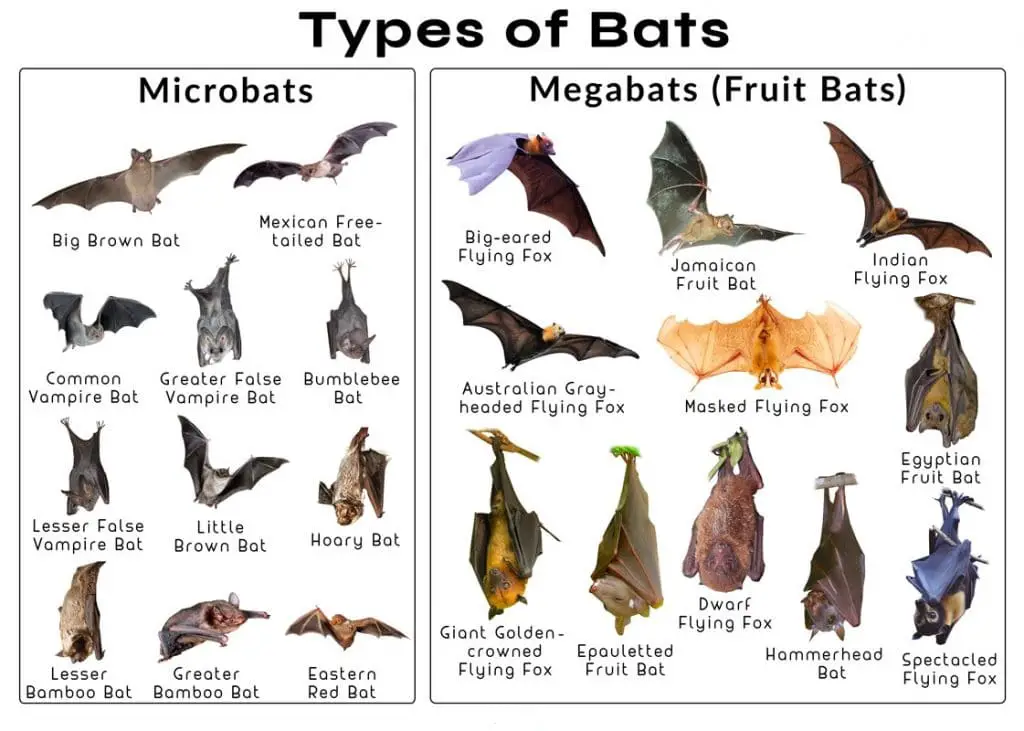
Bat Species
Families | Description |
Vesper bats | There are 407 species in forty-eight genera. They are medium-sized bats found worldwide. |
American leaf-nosed bats | There are 160 species in fifty-five genera. They are sized from small to large and are found throughout America. |
Horseshoe bats | There are 77 species in one Old World genus. |
Old world leaf-nosed bats | There are 81 species in nine genera from Old World tropics to temperate regions. |
Free-tailed bats | There are 100 species in sixteen genera in mild temperate regions. |
Sheath tailed bats | There are 51 species in thirteen genera in all world tropics except the West Indies. |
Slit faced bats | There are 16 species in one genus found throughout Southeast Asia and tropical Africa. |
Leaf chinned bats | There are 10 species in two genera found in the tropical Central and South America. |
False vampire bats | There are 5 species in four genera in Southeast Asia, Central America, and Australia. |
Funnel eared bats | There are 8 species in three genera found in |
Mouse tailed bats | There are 4 species in one genus found in |
Disk winged bats | There are 3 species in one genus in North and Central America except the West Indies. |
New Zealand short-tailed bats | There are 2 species in one genus found in New Zealand. |
Smoky bats | There are 2 species in two genera found in North, South, and Central America. |
Bulldog bats | There are 2 species in one genus found in tropical regions of America. |
Bumblebee bats | Only 1 species in one genus is found in Thailand. |
Old World sucker footed bats | There is also 1 species in one genus found only in Madagascar. |
Flying foxes and other Old World fruit bats | There are 186 large species in forty-two genera found in the Old and New World tropical and subtropical regions. |
Fact: The interesting fact about the nearly discovered 300 species of bats is that only males are discovered. Of course, there will be female bats, but they are not detected yet.
Physical Characteristics
Size and Weight: Size and weight vary with species. On average, they are 1 metre in length and less than 1 kilogram in weight. Bats may be as large as a small dog and as small as a bee. The largest species is the flying fox, which weighs 1.5 kilograms, while the smallest is bumblebee bats, which weigh only 2 grams.
Speed: Clear your misconception about the fastest speed of the mammal; the tiger and the falcon are not the world’s fastest mammals, but the bat is. Although they are small mammals, their speed is breakneck. They can reach up to 100 miles per hour. The new record is 160 km per hour.
Body and Wings: Bats are winged creatures with muscular chests and shoulders. This musculature gives them strength in flying. Their hips and legs are slender. The wing bones are similar to human hands,covered with a flap of skin between bones. It is shaped like an umbrella’s lower edge.
Fur and Coat Coloration: Bats have fur on their bodies except wings. The fur colour covers shades of brown, red, tan, and grey. However, coat colour is the same in 80 per cent of the species. The other 20 per cent show different colour patches and stripes.
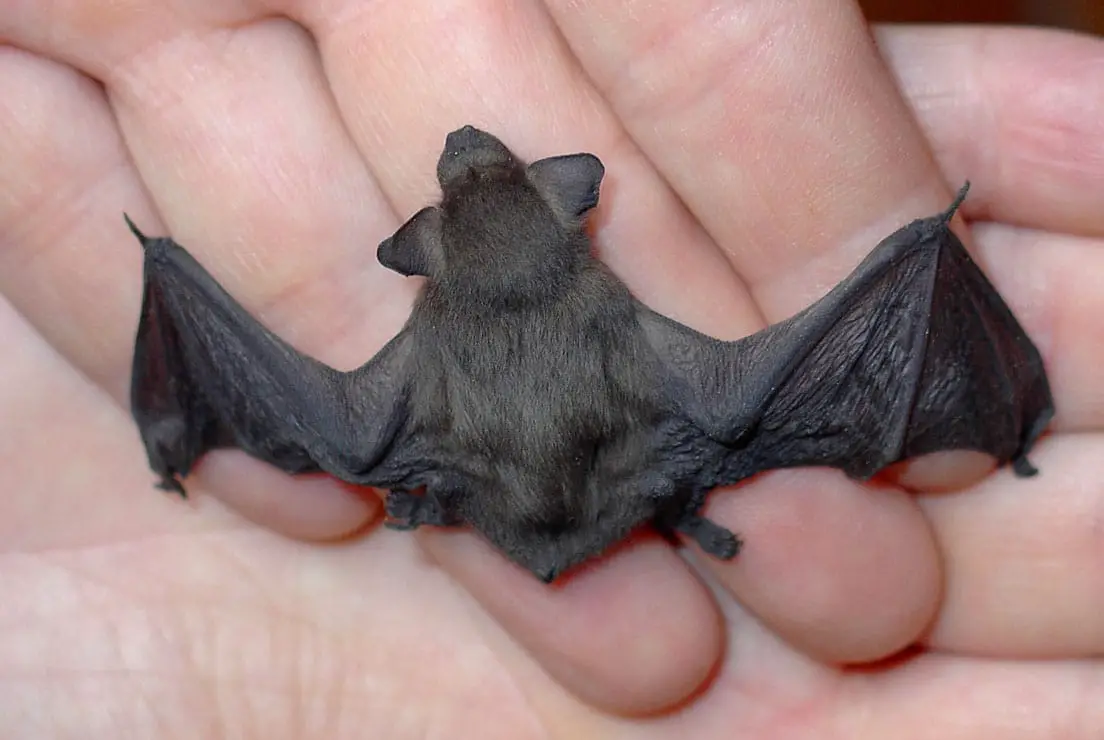
Size and Weight
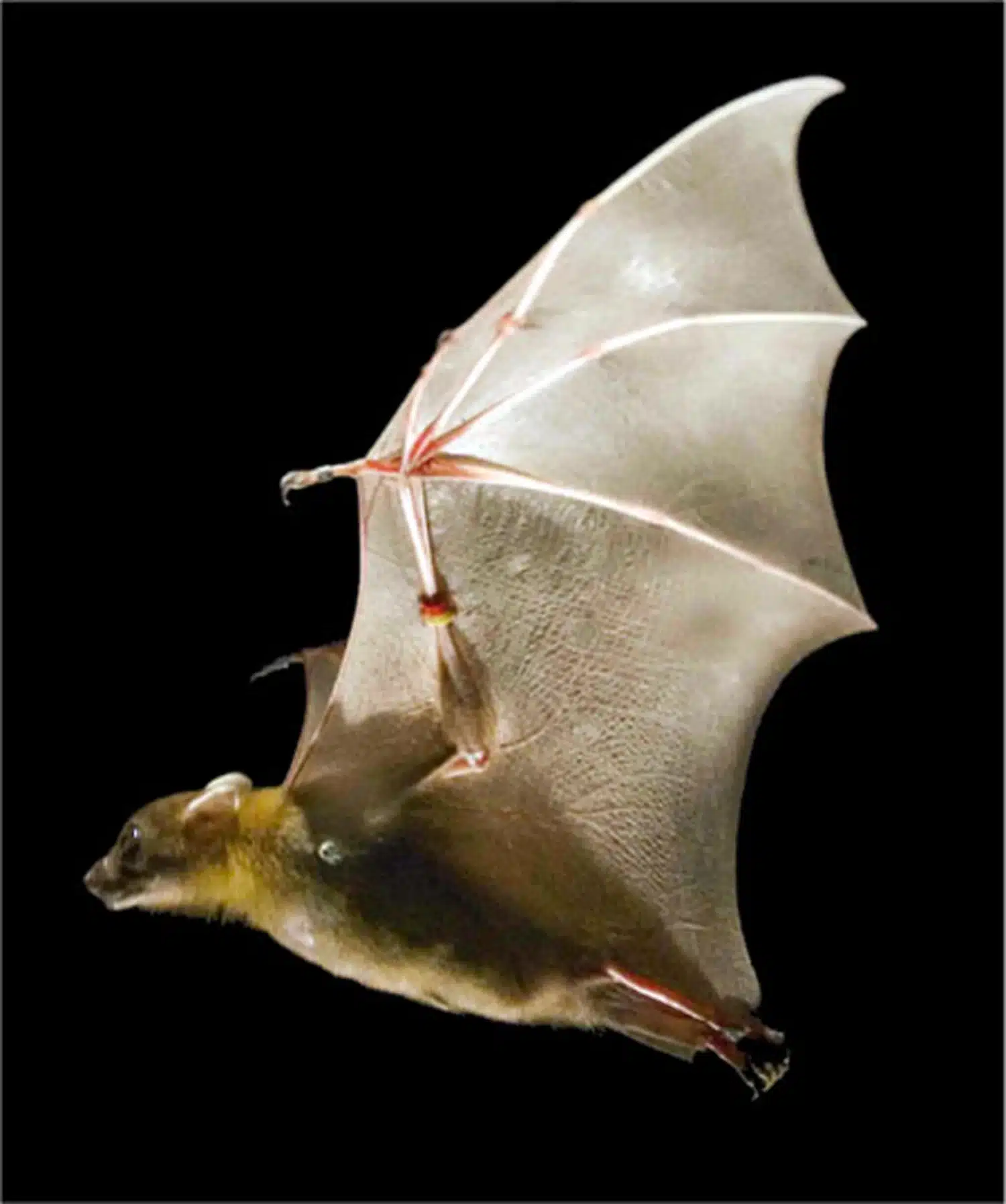
Bats Speed
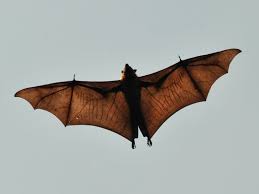
Body and Wings
Why are they called Bats?
Sometimes, we hear the name of a thing or animal and are eager to know about its meaning because we are bound to our curious nature. The same thing happened to me in the case of bats. There are two theories; one for the term Chiroptera and the second for the term bat.
The term Chiroptera comes from the Greek origin which means “hand-wing.” It thoroughly describes the anatomy of bat forelimbs are designed into wings by nature.
According to zoologists, the term bat comes from the old English word “baet”, which means “mouse” or “small flying” creature. Likely, it originated from the fact that bats are small and winged, nocturnal creatures like mice with the same size and agility.
Distribution and Habitat
These winged creatures are found in every corner of the world except polar regions and isolated islands, the Arctic and Antarctic. They are mainly found in the tropical and semitropical regions, also found in the United States. They inhabit hidden places such as caves, rock crevices, old bulidings, mines, trees, and urban areas. It is such a horrifying experience when bats overlap your head in the night.
Diet and Digestion
The diet of the bats varies with the species. Seventy per cent of the bat species are insectivores, consuming spiders, beetles, bugs, termites, winged insects, etc. The rest of the species are frugivores eating fruits, berries, leaves, and bark or nectarivorous (feed on nectar and pollens). They suck nectar from the plants such as cacti and agave. Few species are carnivorous, eating small mammals, birds, amphibians, other bats and fish.
But here is something unrevealed for most of you: the vampire bats. The notorious vampire bats feed on the blood of mammals and birds. They are not sucking their blood but properly drinking it by making a small cut by their teeth. The blood explodes like a spray of water from the fountain. It cannot cause the death of victims but make them diseased. A vampire bat can suck blood for about 30 minutes, even unnoticed.
Like humans, bats cannot produce Vitamin C (ascorbic acid) and attain it from their fruit diet. Digestion in bats is a rapid action. They chew and digest their food in 30 minutes after consuming it. They start defecation in forty to sixty minutes after digestion. It helps them to fly quickly.

Behavioral adaptations
Social Behaviour
Bats are the most social mammals, living in large colonies or millions. They make up the groups and interact by sharing food, nursing each other pups and doing mutual grooming. It helps them to lessen the risk of predation.
Flying Behaviour
These flying mammals can fly without the pressure of air unlike birds. They cannot reduce their wingspan like birds because their wing surface and structure do not allow them to do that. So, they can not travel a long distance as birds can do.
Roosting
The posture of bats hanging upside down is called roosting. They usually roost when they are not flying. The roosting sites are called roosts. They can lock their feet to the roost when hanging upside down.
Hibernation
In winter, bats hibernate in the caves as food is scarce in the cold. They use a torpor method in which their body temperature and metabolism decrease to a level without activity. In summer, they become active again.
Communication
These agile creatures can use vocalisation methods, like squeaks, clicks, and buzzes. An interesting thing is that Mexican free-tailed bats can sing like birds. Males chirp and trill to attract the females. Bats’ scientifically important method of communication is Echolocation. They can recognise the thing by its sound.
Why do bats hang upside down?
Every one of us, at least one time in life seen bats hanging upside down. You may also ponder the reason behind this behaviour. So, the reason is that they hang to take a flight without needing a lift. Because they can’t run, it is nearly impossible for them to take off from the ground. They just open their wings and fly.
Reproduction and Parenting
Bats breed in the spring or mid-summer, mainly in May, June or July. There is no specific name for male or female bats. However, offsprings are called pups. The gestation period is six and nine weeks. Females make nests in the caves, dead trees, and rock crevices as a nursery for their young. They can assist each other in the nursing of the young.
Most bats give birth to one pup, but one species commonly gives birth to twins: the eastern red bat. At birth, the pups are naked. Youngs feed on mothers’ milk within the 3 to 4 weeks of birth. After one month, they can fly outside the roost and start foraging.
Mortality Rate and Lifespan
It is a common saying that the smaller the animal, the shorter the Lifespan, but bats break this rule of longevity. These night marvels can live about 20 years. The longevity recorded in the bats is 41 years.
Death causes: Bats have few natural predators, such as owls and hawks. However, because of their nocturnal habits, they are not preyed upon daily. The leading cause of their death is white-nose syndrome. It is a white fungus that infects their ear, muzzles and wings in humid conditions during hibernation. It causes a dramatic decline in the population of bats across the United States.
Ecological Importance
Bats are the most underestimated animal in the world, but they have a significant ecological importance. As the fruit bats feed on fruits, leaves, bark, nectar, and pollen. They are a great natural source of pollination and seed dispersal. In contrast, bats feed on insects helping the farmers and environmentalists to control insects..
It is reported from recent studies that farmers in the United States save $1 billion per year in the context of pesticides in the corn crop by using insectivorous bats to kill pests. In this way, corn crop damage has been markedly reduced. However, the vampire bats are a threat to livestock as they lap up on the cattle’s blood.
Conservation Status
You may think there are hundreds of bat species, so they may not be reduced. However, there is a considerable decline reported in the bat population. Approximately 238 species of bats are considered threatened, out of which 29 are listed as Critically Endangered species. International Bat Conservation works on the habitat restoration of bats to save their roosting sites.
Bat Fun Facts
- Bats contain up to 1400 species.
- They help to control night insects.
- A vampire bat can require two tablespoons of blood every night.
- A tiny bat can eat up to 3000 insects in a night.
- Some bats have a wingspan of 5 feet.
Cultural Value
Historically, Human beings persisted animals as “good or evils” by their sociocultural definitions.
- In the West, bats are considered evil spirits and indicators of death.
- In ancient mythology, these night hunters were the representatives of dark powers.
- In some Asian-Pacific cultures, they are symbolized as good fortune.
The life of these underestimated mammals is still debated.
FAQs- Frequently Asked Questions
What are 5 facts about bats?
- Bats are the only true flying mammals.
- They make up 20% of all mammal species.
- A tiny bat can eat up to 3,000 insects in a night.
- Bats use echolocation to navigate and hunt in the dark.
- Some bats, like the flying fox, have wingspans up to 5 feet.
What are bats classified as?
Bats are mammals belonging to the order Chiroptera, making them the only true flying mammals in the world.
Why are bats important to the ecosystem?
Bats play a crucial role in pollination, seed dispersal, and controlling insect populations, benefiting agriculture and the environment.
How many species of bats exist?
There are over 1,400 species of bats, making up about 20% of all mammal species worldwide.
What do bats eat?
Most bats are insectivores, while others are frugivores, nectar-feeders, and some, like vampire bats, consume blood.
Where do bats live?
Bats are found globally, except in polar regions, inhabiting caves, trees, old buildings, and other sheltered areas.
Why do bats hang upside down?
Bats hang upside down to easily take flight since their body structure doesn’t allow for a ground takeoff.
How fast can bats fly?
Some bat species can fly at speeds of up to 100 miles per hour, with the Mexican free-tailed bat being among the fastest mammals.
Do bats hibernate?
Yes, many bats hibernate during winter, lowering their body temperature and metabolism to conserve energy when food is scarce.
How long do bats live?
Bats can live up to 20 years or more, with the longest recorded lifespan being 41 years.
Are bats dangerous to humans?
Most bats are harmless to humans, though vampire bats can spread diseases through their blood-feeding habits.
Why are bats special?
Bats are special because they are the only mammals capable of sustained flight, and their ability to use echolocation sets them apart for precise navigation in the dark.
Can bats see at night?
Yes, bats can see at night, but they rely heavily on echolocation to navigate and hunt, allowing them to detect objects in total darkness.
What does a bat eat?
Most bats are insectivores, feeding on insects like mosquitoes, beetles, and moths. Others eat fruit, nectar, or small animals, and some, like vampire bats, feed on blood.
Are bats harmless?
Generally, bats are harmless to humans. However, some can carry diseases like rabies, and vampire bats can transmit infections to livestock through their blood-feeding.
What are the special abilities of bats?
Bats have unique abilities like echolocation for detecting prey and obstacles in the dark and their exceptional flying speed, with some reaching up to 100 mph.
What is bat’s worst enemy?
Bats’ worst enemy is white-nose syndrome, a fungal disease that has caused massive population declines, especially in North America. Natural predators include owls and hawks.
Can a bat bite you?
While bats can bite if they feel threatened, they generally avoid human contact. Vampire bats may bite animals or humans to feed on blood, but this is rare.
Are bats bad at home?
Bats in the home can pose risks due to the diseases they may carry, like rabies, and their droppings can lead to health issues, but they are not aggressive and help control pests.
Learn More About Bats
Welcome to our page dedicated to the fascinating world of bats. Here, you’ll find articles that answer common questions about bats, such as their diet, nocturnal habits, reproduction cycle, and how they interact with humans and their environment.
Scroll down to learn more about the unique behaviors of bats and discover the reasons behind their incredible adaptations and survival strategies.

Are bats blind
Are Bats Blind? It’s a common myth that bats are blind. This misconception likely stems from their nocturnal habits and
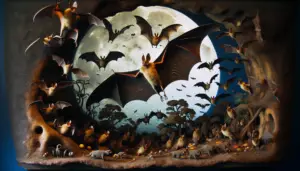
Are bats dangerous to humans?
Are Bats Dangerous to Humans? No, bats are not inherently dangerous to humans, but they can pose risks if certain
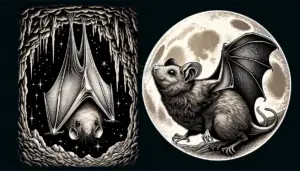
Are bats mammals or rodents?
Bats are mammals, not rodents. Understanding the Classification of Bats Bats belong to the order Chiroptera, which is entirely separate
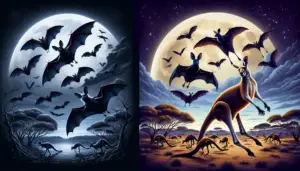
Are bats marsupials like kangaroos?
Are Bats Marsupials Like Kangaroos? No, bats are not marsupials like kangaroos; they are placental mammals. You might be curious

Are bats noisy when roosting or flying?
Are Bats Noisy When Roosting or Flying? Yes, bats can be quite noisy when roosting or flying, especially when they
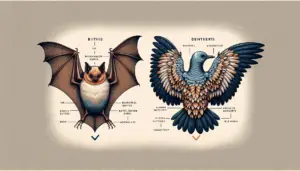
Are bats related to birds
Are Bats Related to Birds? No, bats are not related to birds; bats are mammals, while birds belong to the
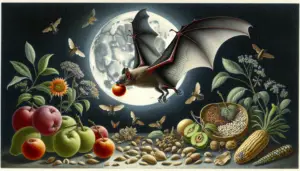
Are there bats that eat more than just insects?
Yes, there are bats that eat more than just insects. Introduction to Bat Diet Diversity Bats are often associated with
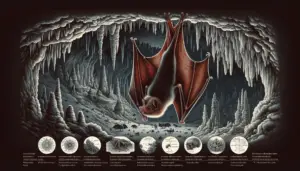
Are vampire bats real
Yes, vampire bats are real. You’ve probably heard stories or seen movies featuring vampire bats, but you might be wondering
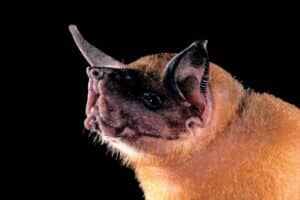
Bulldog bats
Introduction to Bulldog Bats The Bulldog Bats (Noctilio genus), often called hare-lipped bats, are fascinating creatures known for their distinct
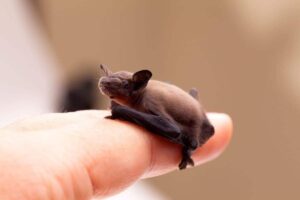
Bumblebee Bat
Introduction to the Bumblebee Bat The Bumblebee Bat (Craseonycteris thonglongyai), also part of the bat family, is the world’s smallest
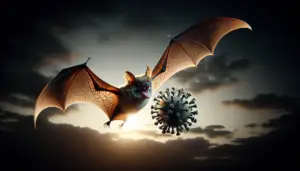
Can bats spread rabies without biting?
Can Bats Spread Rabies Without Biting? Yes, bats can spread rabies without biting. This may happen through scratches or contact
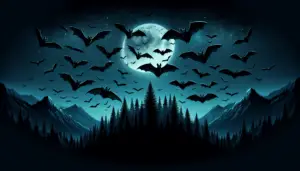
Do bats attack humans
Do Bats Attack Humans? Generally, bats do not attack humans. Bats are often misunderstood creatures. They are shy animals that
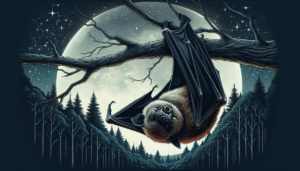
Do bats bite humans
Do Bats Bite Humans? Yes, bats can bite humans, but it is a rare occurrence and typically happens when bats
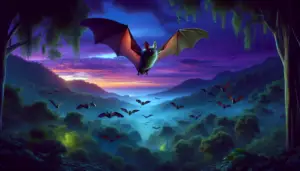
Do bats have eyes
Do Bats Have Eyes? Yes, bats do have eyes, and they use them to see just like other animals. You

Do bats have good eyesight or rely only on echolocation?
Bats have always fascinated me with their mysterious nocturnal lifestyles. You might be wondering whether bats have good eyesight or
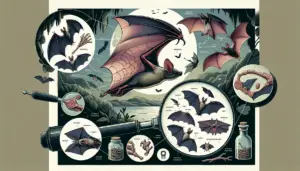
Do bats have tails
Do Bats Have Tails? Yes, most species of bats do have tails. While the length and visibility of the tail
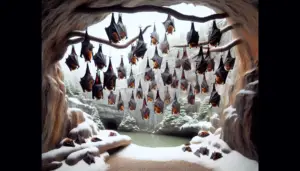
Do bats hibernate
Do Bats Hibernate? You might be wondering if bats hibernate during the colder months. The short answer is: yes, some
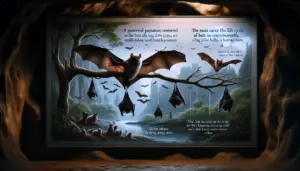
Do bats lay eggs or give birth to live young?
Do Bats Lay Eggs or Give Birth to Live Young? No, bats do not lay eggs; they give birth to

Do bats make noise
Yes, bats do make noise. Bats are known for their unique methods of communication and navigation, which involve producing a

Do bats migrate like birds when the seasons change?
Do Bats Migrate Like Birds When the Seasons Change? Bats, much like birds, are creatures of the sky that captivate
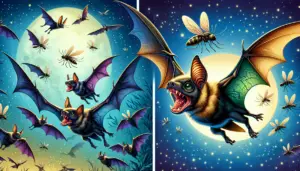
Do bats really eat mosquitoes
Yes, bats really do eat mosquitoes. Bats are often thought of as mysterious creatures of the night. You might be
